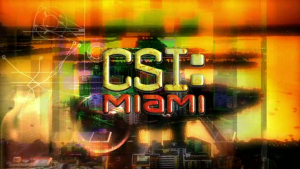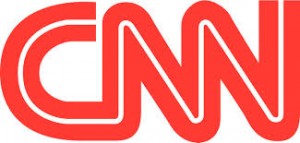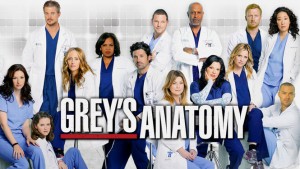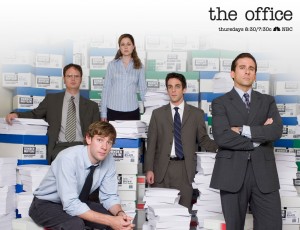Saturday, April 19, 2014 1:38 am
A speech code is a system of socially constructed symbols and meanings, premises, and rules, pertaining to communicative conduct. The speech code contains six propositions which are wherever there is a distinctive culture, there is to be found a distinctive speech code;In any given speech community, multiple speech codes are deployed;A speech code involves a culturally distinct psychology, sociology, and rhetoric;The significance of speaking depends on the speech codes used by speakers and listeners to create and interpret their communication;The terms, rules, and premises of a speech code are inextricably woven into speaking itself;The artful use of a shared speech code is a sufficient condition for predicting, explaining, and controlling the form of discourse about the intelligibility, prudence, and morality of communication conduct. For myself, I feel the greatdistinctiveness of speech codes due to thedistinction of culture. When I was first time came to U.S., I felt the great difference between the knowing the language and the social function of the language. For example, when people say whatever they are not really saying that they are good and it is a way to show that they are not that happy with the situation. However, whatever literally means all good in Chinese. Another example is how you doing. It took me awhile to understand that it is not a real question but a way to say hi. Effective communication needs the background, the meanings, the rules that speech code contains. Straight translation is not enough.
Tuesday, April 15, 2014 9:46 pm
George Gebner’s Cultivation Theory focuses on the idea that “those who spend more time watching TV are more likely to see the “real world” through TV’s lens” (370). Gebner attempted to find a positive correlation between the amount of violence present in television and how this tends to affect the audience’s views on the world around them. He also created a three-pronged framework for his theory: process analysis, message system analysis, and cultivation analysis. Because I watch a fair amount of television, I see Gebner’s Cultivation Theory play a role in my everyday life. One show I like to watch is CSI: Miami. This show involves copious amount of crime, detective work, and violence. A friend of my family used to do detective work, and when I tried to relate his job to the show it surprised me when he informed me of the vast differences between his own line of work and the way it is depicted in CSI. I assumed that every case he took on was incredibly violent, simply because that’s how it appeared to be on the show. I played into Gebner’s Cultivation Theory by viewing a real life situation through the lens of the television, and assuming that this real life situation would perfectly match the way it appears to be on TV
 .
.
Tuesday, April 15, 2014 9:35 pm
The Agenda-Setting Theory, by Maxwell McCombs and Donald Shaw, is essentially a function of mass media. The agenda-setting hypothesis involves the concept that mass media has the ability to transfer “salience of issues on their news agenda to public agenda.” We essentially need to differentiate media from public agenda. The media agenda involves the pattern of news coverage across print and broadcast media while public agenda measures the publics most important issues. This reminded me of a very recent new story about a black man who had been wrongly imprisoned for 25 years for killing someone.
http://newyork.cbslocal.com/2014/04/08/da-man-wrongly-convicted-of-1989-brooklyn-murder-walks-free-out-of-prison/
Tuesday, April 15, 2014 9:31 pm
McCombs’ and Shaw’s Agenda-Setting Theory revolved around the idea that “the mass media has the ability to transfer the salience of issues on their news agenda to the public agenda” (378). In short, this means that the public will place importance on the same issues that the media places importance on. This idea is very relevant in relation to popular culture. For example, news outlets regarding the lives of the rich and famous such as TMZ often dictate what people are talking about in terms of celebrity gossip. If they publish articles about a new celebrity couple or an actress’ botched plastic surgery, that is the issue that people will most likely be talking about that week. This properly reflects the Agenda-Setting Theory because TMZ is in a way dictating the topics that people show interest in. By consistently publishing articles focused on one topic, people will start to view that issue as somehow of greater importance than the rest, and focus on that issue over the others.

Tuesday, April 15, 2014 9:10 pm
The Cultivation Theory involves three approaches in analyzing communication. The first involves institutional process analysis which understands different policies and practices that behind the scenes media organizations utilize. The second involves a message system analysis which is the systematic study of television content. The third involves cultivation analysis which is the concept that individuals who spend a lot of time watching television are more likely to view the world through the TV’s perspective. Furthermore, this concept focuses on violence that it leads to the exaggerated belief in a “scary world.” Several popular television shows such as Scandal and Homeland influence large audiences because of its popularity. The show, 24, also has a lot of impact on audiences when it was still airing. There was a black president and much corruption in the United States in part due to foreigners and locals. Attached is a clip of the president’s assassination which triggers a lot of conspiracy theories and other dangerous concepts in audiences. This clip is a variation of images of President Palmer and his death. President Palmer
Tuesday, April 15, 2014 7:23 pm
Agenda-Setting hypothesis is “the mass media have the ability to transfer salience of issues on their news agenda to the public agenda” (378). The theory is broken up into two separate parts: the media agenda and the public agenda. Media agenda is “the pattern of news coverage across major print and broadcast media as measured by prominence and length of stories” (379) while public agenda refers to the most important public issues according to the public. When reading about agenda-setting theory, I thought of my psychology class. In introduction to psychology, we covered several chapters throughout the semester. Each topic is significant and common to learn in an introductory psychology course. I related this to media agenda because the topics we learned are covered and explained in most introductory psychology textbooks. After covering these topics, my teacher posted a poll on Sakai listing five extra topics in psychology. The class voted online and the topic with the most votes was covered at the end of the semester. I related this to public agenda because it reveals what are the most important issues or topics according to the public.

Tuesday, April 15, 2014 5:47 pm
Cultivation theory, a social theory created about the long term effects of television states that the more time people spend watching television and observing reality through the television the more likely those people are to base their social realities on television. This theory is particularly applicable in our world today as people are watching more and more television and the programming continues to become more realistic at the same time. George Gerbner and Larry Gross developed this theory placing importance on tracking cultural indicators in order to determine the effect that it has on people in the real world. Programming these days fills in a lot of blanks about the things we do and don’t know about. For example people who religiously watch a single news source will have their lives framed and their information about worldviews framed by a specific group of thinkers. These groups of thinkers sometimes have very strong opinions which may or may not come across as obvious to the person who is tuned in and will likely have a strong effect on how that person views the subject. Most news stations that are popular in the United States also have a specific political point of view, which often seeks to fulfill an agenda. It is important that we take a step back and check our news sources every once in a while to make sure our opinions are not being swayed unknowingly.

Tuesday, April 15, 2014 3:44 pm
Cultivation theory by George Gerbner is best understood by viewing the framework “as a three-pronged plug leading to a TV set, with each of the prongs uniquely equipped to tell us something different about the world of TV” (367). The three prongs are institutional process analysis, message system analysis, and cultivation analysis. Cultivation analysis is “research designed to find support for the notion that those who spend more time watching TV are more likely to see the “real world” through TV’s lens”(370). I think that watching TV oftentimes influences the way that I view the world. For example, my aunt is a nurse at Memorial Sloan Kettering located in New York City. After watching every season of Grey’s Anatomy, I thought that I knew exactly what her job was like and what she experienced everyday at work. When she comes back from work, she tells me about her day and I imagine every situation as if it was a scene in Grey’s Anatomy. When I compared her job to Grey’s Anatomy, she laughed and told me that it was nothing like the television show at all. Because I watched so many episodes of the television series, I began to view the “real world” through TV’s lens.

Tuesday, April 15, 2014 2:07 am
The cable news channel Fox News has often been used as an example for how the mass media can present an agenda when reporting “news” to the general public. Fox News stresses certain things, such as issues concerning Obamacare, whereas MSNBC may be more focused on presenting their perspective of news that is totally different. This issue can be seen as the Agenda Setting Hypothesis, as the media is dictating the importance of certain issues and the spin on certain issues when presenting them to the general public. Recently, President Obama and Bill O’Riley were on Fox News and Obama attempted to point out where O’Riley had previously, in his opinion, presented issues in a misleading manner, or over stressing the importance of certain details. This shows Obama’s awareness of how influential mass media is over the average consumer and connects with the Agenda Setting Hypothesis.
Source: http://nbcpolitics.nbcnews.com/_news/2014/02/02/22548073-obama-clashes-with-fox-newss-oreilly-over-record?lite
Tuesday, April 15, 2014 1:52 am
The popular TV show, “The Office,” depicts a small office in the sleepy town of Scrantion, PA. The workers in this office lead what can be characterized as rather boring daily lives that are made entertaining by an ignorant boss, office pranks, and office romances. The show makes office life seem that if one were to sign up for a drab job, it would be enlivened by outrageous characters and funny antics. Someone I know got a job at a small sales company right out of college, and was in a sort of similar working situation as those in “The Office.” When people would talk to her about her job, many had the reaction: “wow that sounds just like ‘The Office’ I bet your job is so fun!!.” This is an instance of resonance because people perceived that just because she had a small office job, her life must be just like “The Office”, when in fact her working environment was rather conservative and scandal-free.









